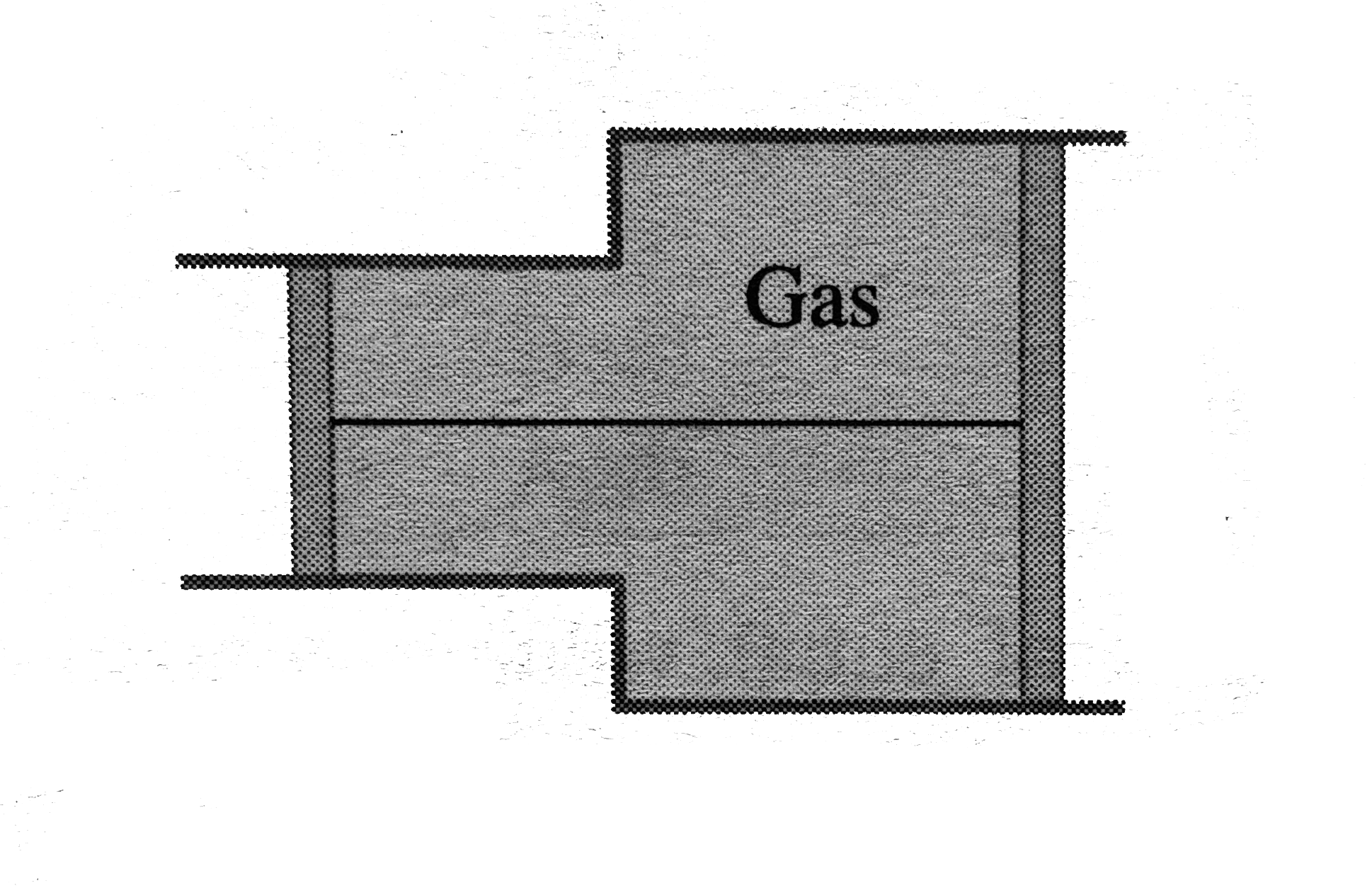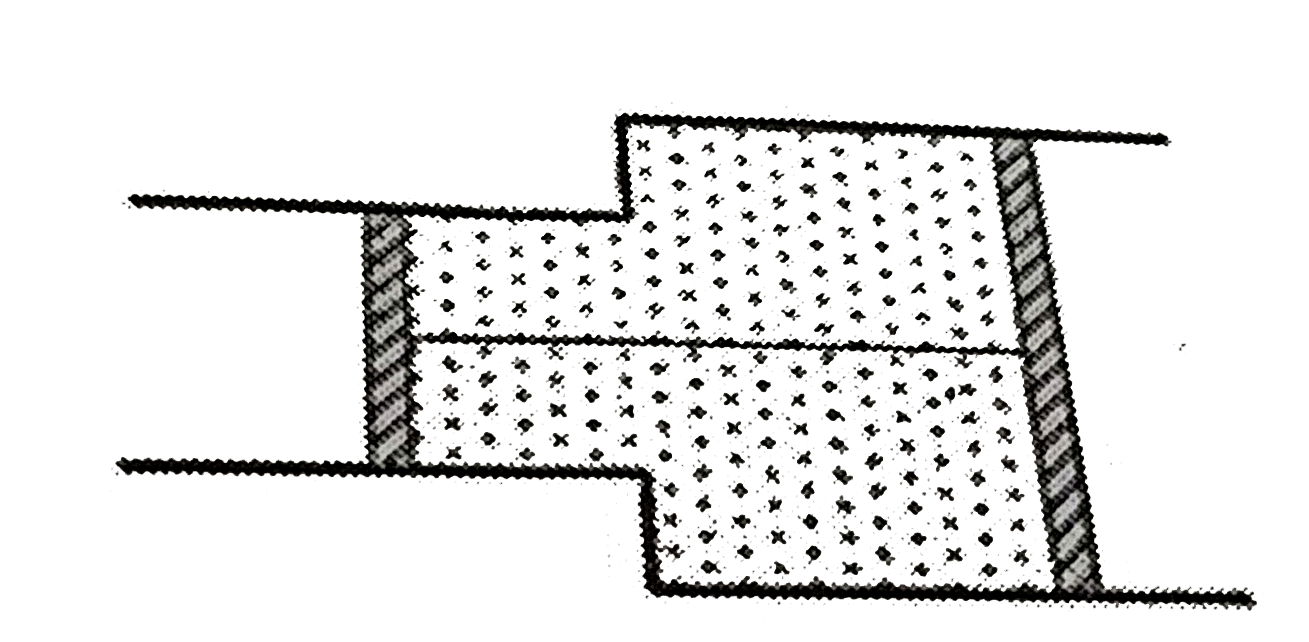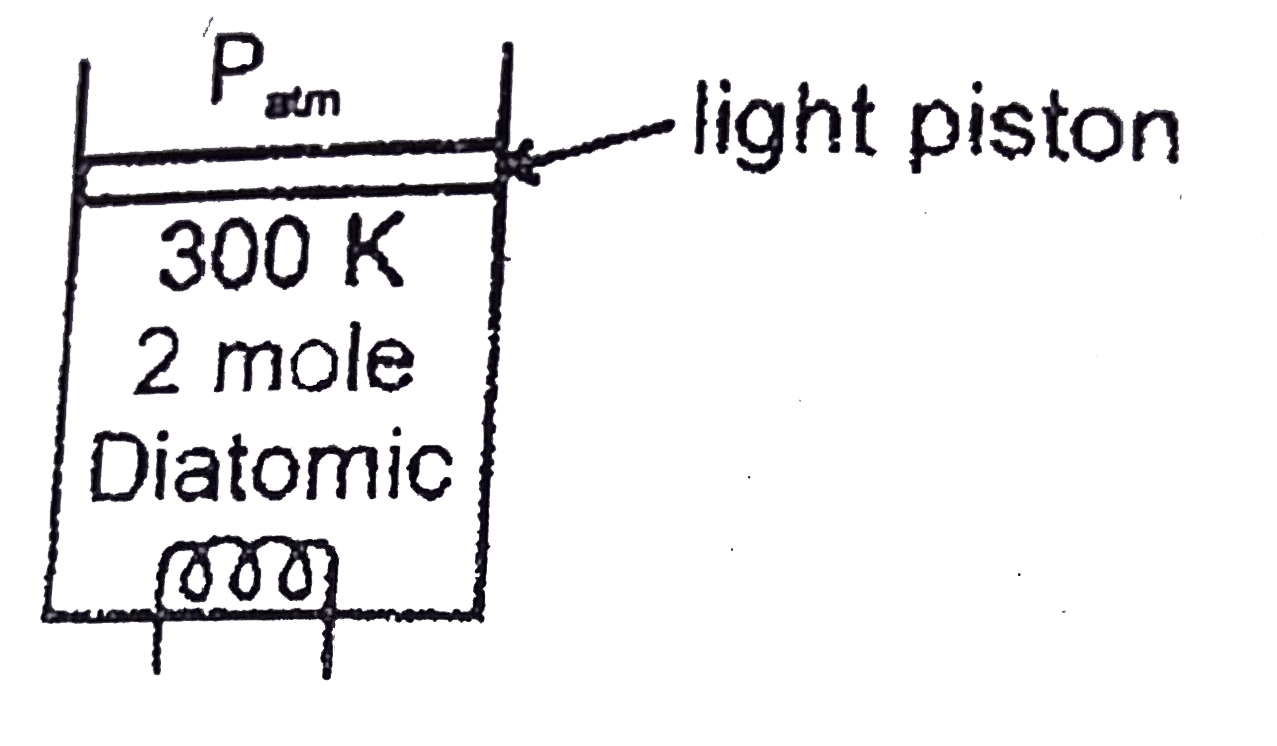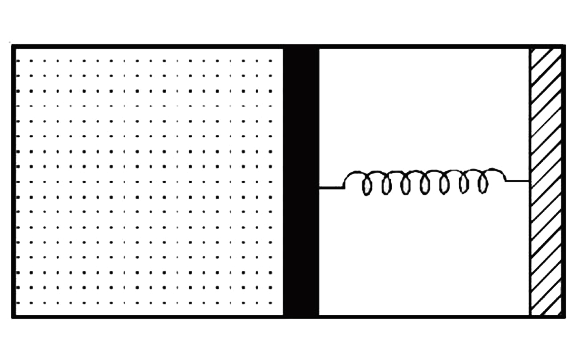A gas is filled in the cylinder shown in fig. The two pistons are joined by a string. If the gas is heated, the right piston will

move toward left
move toward right
remain stationary
none of these
The correct Answer is:B
b. When temperature of gas increase, it expands. An the cross-section area of right is more, greater force will work on it (because F=PA). So piston will move towards rigth.
Topper's Solved these Questions
- KINETIC THEORY OF GASES AND FIRST LAW OF THERMODYNAMICSBook:CENGAGE PHYSICSChapter:KINETIC THEORY OF GASES AND FIRST LAW OF THERMODYNAMICSExercise:Multiple Corrects
Explore 29 Videos
- KINETIC THEORY OF GASES AND FIRST LAW OF THERMODYNAMICSBook:CENGAGE PHYSICSChapter:KINETIC THEORY OF GASES AND FIRST LAW OF THERMODYNAMICSExercise:Assertion-Reasoning
Explore 6 Videos
- KINETIC THEORY OF GASES AND FIRST LAW OF THERMODYNAMICSBook:CENGAGE PHYSICSChapter:KINETIC THEORY OF GASES AND FIRST LAW OF THERMODYNAMICSExercise:Subjective
Explore 22 Videos
- KINETIC THEORY OF GASESBook:CENGAGE PHYSICSChapter:KINETIC THEORY OF GASESExercise:Compression
Explore 2 Videos
- LINEAR AND ANGULAR SIMPLE HARMONIC MOTIONBook:CENGAGE PHYSICSChapter:LINEAR AND ANGULAR SIMPLE HARMONIC MOTIONExercise:Multiple Correct Answer Type
Explore 9 Videos
Similar Questions
A horizontal cylinder has two sections of unequal cross - sections, in which two pistons can move freely. The pistons are joined by a string, Some gas is trapped between the pistons. If this gas is heated the pistons will

View SolutionTwo moles of a diatomic gas at 300K are enclosed in a cylinder as shown in figure. Piston is light. Find out the heat given if the gas is slowly heated to 400K in the following three cases.
(i) Piston to free to move
(ii) If piston does not move
(iii) If piston is heavy and movable

View Solution
Knowledge Check
An ideal monoatomic gas is confined in a horizontal cylinder by a spring loaded piston (as shown in the figure). Initially the gas is at temperature T1, pressure P1 and volume V1and the spring is in its relaxed state. The gas is tehn heated very slowly to temperature T2,pressure P2and volume V2. During this process the piston moves out by a distance x. Ignoring the friction between the piston and the cylinder, the correct statement (s) is (are)
 AIf V2=2V1andT2=3T1, then the o the energy stored in the spiring is 14P1V1BIf V2=2V1andT2=3T1, then the change in internal energy is 3P1V1CIf V2=3V1andT2=4T1, then the work done by the gas is 73P1V1DIf V2=3V1andT2=4T1, then the heat supplied to the gas is 176P1V1
AIf V2=2V1andT2=3T1, then the o the energy stored in the spiring is 14P1V1BIf V2=2V1andT2=3T1, then the change in internal energy is 3P1V1CIf V2=3V1andT2=4T1, then the work done by the gas is 73P1V1DIf V2=3V1andT2=4T1, then the heat supplied to the gas is 176P1V1A piston of cross-section area A is fitted in a cylinder in which gas of volume V at pressure p is enclosed. It the gas obeys Boyle's law, then what is the angular frequency, if piston is displaced slightly ?
A√AgVB2√AgVC√2AgVD3AgV
A gas filled in a cylinder fitted with movable piston is allowed to expand. What is the nature of the work done by the gas?
View SolutionA gas is filled in a cylinder fitted with a piston at a definite temperature and pressure. Explain on the basis of kinetic theory why on pulling the piston out, the pressure of decreases.
View SolutionA gas is filled in a cylinder fitted with a piston at a definite temperature and pressure. Explain on the basis of kinetic theory why on pulling the piston out, the pressure of decreases.
View SolutionA gas is filled in a cylinder fitted with a piston at a definite temperature and pressure. Explain on the basis of kinetic theory, the pressure of the gas increases by raising its temperature.
View SolutionA Perfect gas is enclosed in a vertical cylinder filled with a piston of mass m. The gas is heated by passing constant current I through a heating coil of resistance R placed inside the cylinder. At what speed v must the piston move upward in order that temperature of the gas may remain unchanges? Assume ideal insulating walls and piston and there is no fusion.
View SolutionA gas is enclosed in a cylindrical vessel fitted with a frictionless piston. The gas is slowly heated for some time. During the process, 10 J of heat is supplied and the piston is found to move out 10 cm. The area of cross-section of the cylinder =4cm2 and the atmospheric pressure =100kPa.
View Solution
